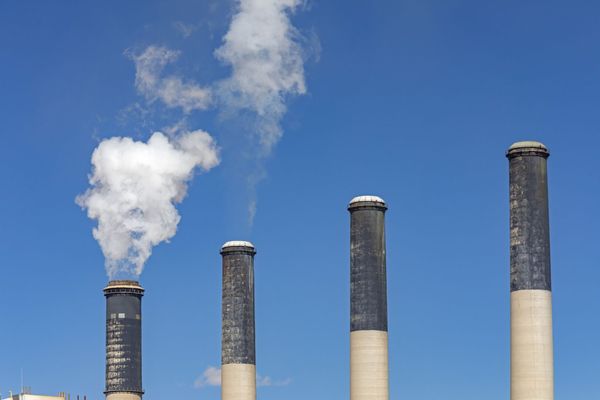
As someone with a tech founder, finance and real estate investing background, I am hopeful that a new U.S. manufacturing renaissance can bring back jobs and investments into parts of America that have been devastated. It will not be a surprise to many that millions of Americans involved in the huge manufacturing sector and states that rely heavily on it will benefit greatly from a renaissance.
While robotics have advanced, and AI demolishes service industries, the idea of a “lights out” factory — meaning there are no human workers — is not quite there yet. People are still required in these state-of-the-art factories, although admittedly of higher skill and fewer numbers. That could translate to a lot of American jobs if manufacturing returns here. But there are several hurdles and considerations.
Trump has always stated that he intends to pursue tariffs on key imported products unless they build their factories here. Economists say those tariffs will only make products more expensive. But if those manufacturers agree to bring those factories and jobs here, Trump has said the tariffs will not be imposed, effectively making it a bargaining chip. In general, when you increase the input costs of a manufactured product for various reasons, including adding tariffs to components, equipment and materials, the product price will increase. For imported finished goods, once a tariff is applied, the final price will increase — unless in both cases the company decides to absorb these added costs and not pass these on to buyers, but only if their profit margins are sufficient.
Making manufacturing totally based in the U.S. is not that easy. The supply chain for building airplanes, chips, cars and other sophisticated tech products can be a complex network. On the contrary, building these products and moving their supply chains all to one country requires herculean selection, coordination and monitoring of expert suppliers from different parts of the world. It is probably impossible to expect that everything in the downstream (or upstream) supply chain can be manufactured in the U.S. for these products, but the key ones with sophisticated intellectual properties should ideally be in democratic countries who are strong U.S. allies.
To say “Made in the USA” does not mean everything in your cellphone or laptop is actually American made. This is true whether the manufacturing company is Boeing, Ford, Intel or any U.S. company.
For example, the entire chip industry relies on a company in the Netherlands called ASML. ASML builds equipment that are around as big as a bus, containing advanced robotics and something called Extended UltraViolet Lithography machines that cost a few hundred million dollars per machine. The way these huge machines blast droplets of tin with a pulsed CO2 laser, then direct the EUV laser towards the silicon wafer, is something out of a sci-fi film. These ASML EUVL machines are used by Intel, Samsung, TSMC and others to lay chip patterns of atomic level size. You cannot just copy these EUVL machines, as the technology is extremely complex, and these are restricted for export to certain countries like China.
The trend to offshore manufacturing actually began in the 1970s, with the predominant factor being labor and energy costs. Many Asian and other Third World countries during the 70s, hungry for jobs for their own locals, began to set up tax-free export processing zones. This allowed American (and other) foreign corporations to build factories and operate at cheaper labor, energy and other costs offshore.
The same is still true today. However, because certain countries such as Taiwan received manufacturing revenues for decades, they actually took what they earned and invested it in technology innovation. So not only is chip manufacturing in Taiwan cheaper, it is actually better and in some cases more advanced. Their famous wafer fabrication company, Taiwan Semiconductor Manufacturing Corporation, runs more advanced wafer fabs at smaller transistor sizes than Intel and other chip giants. This is why Apple and other big gadget manufacturers outsource their chips to them.
TSMC has actually built a wafer fab in Arizona alongside other fabs by Intel, and has started test production this year driven in part by tensions in the South China Sea. However, all is not rosy. Some labor issues have cropped up. Asian engineers and workers have a Confucian attitude towards work and stay very long hours in the plant, in contrast to American workers who are cognizant of their safety, leave and work hours. This is not to say American workers do not work hard. It just points out that money alone is not enough to move manufacturing here.
The U.S. gave American chipmakers significant amounts of capital to innovate and retool for newer semiconductor processes. Intel is a major recipient of the Chips Act. It remains to be seen if it can actually beat newer and faster horses such as Nvidia in Silicon Valley and TSMC and Samsung in Asia. Intel is currently building a state of the art major fabrication facility in Ohio, which has been labeled the Silicon Heartland.
If cost and profitability concerns can be assuaged for investors and the manufacturing companies themselves — meaning the numbers make sense — the implications are enormous. Manufacturing critical products is important for U.S. national security. Outsourcing critical components to countries like China, while it may make sense costwise, is dangerous from a strategic perspective.
The economic benefits, if manufacturing can be brought back here en masse, are enormous. Manufacturing creates direct and indirect (e.g. consultants, suppliers, etc.) labor jobs and supply chain contracts. Communities spring up to create small towns and cities (such as the Silicon Heartland) where there may have been empty land, creating housing, retail, hotel, food, gym, schools, churches, groceries, restaurants, barbershops, salons and other basic infrastructure which creates its own local economy dynamic. Construction jobs are often the start of that boom, as those empty lands need to be surveyed, bulldozed and leveled, buildings and roads constructed, and people and businesses come in to develop a small growing community.
If manufacturing can be brought back to the U.S. in significant numbers, we will definitely be on our way to creating a smart, healthy, more prosperous, vibrant economy. Failing to do so creates the opposite, and creates instead cesspools of hatred, crime, and other downward societal spirals.







